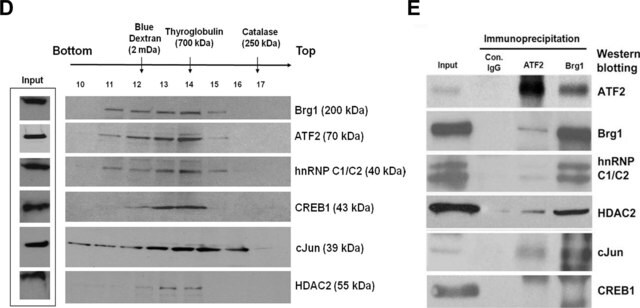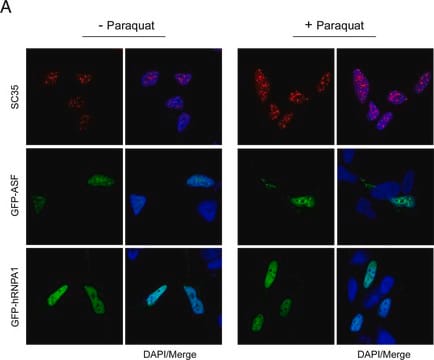MABE241
Anti-dimethyl-phospho Histone H3 (Lys9/27)/(Ser10/28) Antibody, clone 51TA-2H12
ascites fluid, clone 51TA-2H1, from mouse
Sinônimo(s):
Histone H3.1, Histone H3/a, Histone H3/b, Histone H3/c, Histone H3/d, Histone H3/f, Histone H3/h, Histone H3/I, Histone H3/j, Histone H3/k, Histone H3/l
About This Item
Produtos recomendados
fonte biológica
mouse
Nível de qualidade
forma do anticorpo
ascites fluid
tipo de produto de anticorpo
primary antibodies
clone
51TA-2H1, monoclonal
reatividade de espécies
human
técnica(s)
dot blot: suitable
immunocytochemistry: suitable
immunohistochemistry: suitable
immunoprecipitation (IP): suitable
western blot: suitable
Isotipo
IgG1κ
nº de adesão NCBI
nº de adesão UniProt
Condições de expedição
wet ice
modificação pós-traducional do alvo
phosphorylation (pSer10/pSer28), dimethylation (Lys9/Lys27)
Informações sobre genes
human ... HIST1H3F(8968)
Descrição geral
Especificidade
Imunogênio
Aplicação
Epigenetics & Nuclear Function
Histones
Dot Blot Analysis: A representative lot was used by an independent laboratory in unmodified and modified Histone H3 peptides. (Eberlin, A., et al. (2008). Molecular and Cellular Biology. 28(5):1739–1754.)
Immunocytochemistry Analysis: A representative lot was used by an independent laboratory in NIH/3T3 cells. (Eberlin, A., et al. (2008). Molecular and Cellular Biology. 28(5):1739–1754.)
Immunohistochemistry Analysis: A representative lot was used by an independent laboratory in mouse testis tissue. (Eberlin, A., et al. (2008). Molecular and Cellular Biology. 28(5):1739–1754.)
Immunoprecipitation Analysis: A representative lot was used by an independent laboratory in HeLa cells. (Eberlin, A., et al. (2008). Molecular and Cellular Biology. 28(5):1739–1754.)
Qualidade
Western Blot Analysis: A 1:5,000 dilution of this antibody detected Histone H3 on 10 µg of untreated and etoposide acid extract treated HeLa cell lysates.
Descrição-alvo
forma física
Armazenamento e estabilidade
Handling Recommendations: Upon receipt and prior to removing the cap, centrifuge the vial and gently mix the solution. Aliquot into microcentrifuge tubes and store at -20°C. Avoid repeated freeze/thaw cycles, which may damage IgG and affect product performance.
Nota de análise
Untreated and etoposide acid extract treated HeLa cell lysates.
Exoneração de responsabilidade
Não está encontrando o produto certo?
Experimente o nosso Ferramenta de seleção de produtos.
Código de classe de armazenamento
12 - Non Combustible Liquids
Classe de risco de água (WGK)
nwg
Ponto de fulgor (°F)
Not applicable
Ponto de fulgor (°C)
Not applicable
Certificados de análise (COA)
Busque Certificados de análise (COA) digitando o Número do Lote do produto. Os números de lote e remessa podem ser encontrados no rótulo de um produto após a palavra “Lot” ou “Batch”.
Já possui este produto?
Encontre a documentação dos produtos que você adquiriu recentemente na biblioteca de documentos.
Nossa equipe de cientistas tem experiência em todas as áreas de pesquisa, incluindo Life Sciences, ciência de materiais, síntese química, cromatografia, química analítica e muitas outras.
Entre em contato com a assistência técnica








